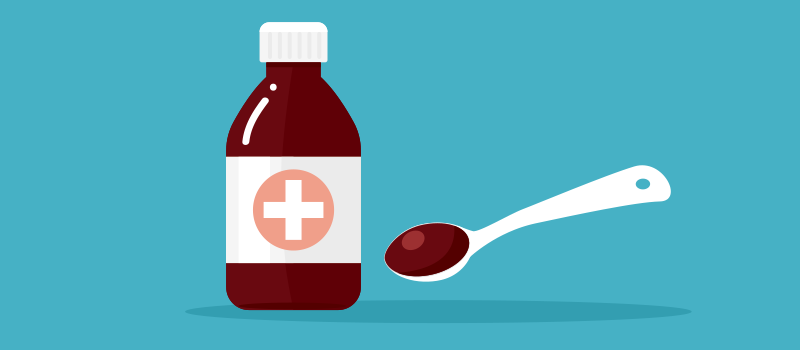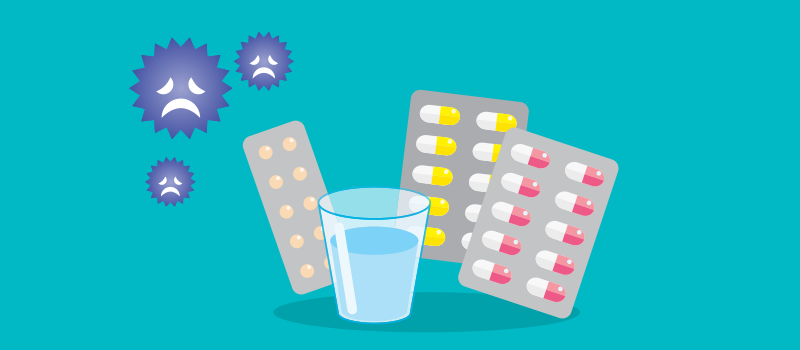What’s the Buzz
The Bee Healthy Blog
How Long Does a Cold Last?

The common cold is a viral, widespread infection that is usually harmless. Adults catch an average of two to three colds a year, while young children can have even more colds, up to four every year.
While it is a self-limited illness, symptoms of a cold can leave you feeling miserable. Over-the-counter cold medications are available to help relieve symptoms. Most colds last for 7-10 days. You should see your healthcare provider if you don’t feel better after ten days.
Please continue reading to learn more about how long common cold symptoms last and the stages of this illness. We’ll also talk about the causes, spread, treatment, and prevention of common colds.
What causes the common cold?
The common cold is a viral upper respiratory tract infection that affects the nose, throat, and sinuses. There are more than 200 different viruses known to cause common colds. Almost half of all colds are caused by a group of viruses called rhinoviruses (more than a hundred different rhinoviruses have been discovered). Other types of viruses can also cause cold symptoms.
What are the typical cold symptoms?
Symptoms of a cold usually start 1-3 days after you pick up a cold virus. They include sneezing, nasal congestion, stuffy nose, and runny nose. In addition, you can have flu symptoms such as cough, sore throat, scratchy throat, sinus congestion, sinus pressure, headache, fever, and body aches.
How long does the average cold last?
The average cold lasts for 7-10 days. However, cold symptoms can linger for 2-3 weeks in some people.
What are the stages of a cold?
- Incubation period: This is the time between virus exposure and symptom onset. Symptoms of a cold typically start 1-3 days after a cold virus enters your body. However, you can develop cold symptoms as quickly as 10-12 hours after exposure.
- Peak symptoms: The symptoms of a common cold last for 7-10 days on average. However, they peak 1-3 days after they start.
- Fading symptoms: Symptoms of a cold typically level off and fade after 3-10 days. However, some people can have lingering cold symptoms, such as stuffy nose, runny nose, and coughing, for 2-3 weeks.
How do cold viruses spread?
Colds spread from person to person. When a sick person sneezes or coughs, they release droplets containing the virus into the air. If a healthy person breathes in these droplets, the cold virus enters their nasal passages and makes them sick.
You can also catch a cold by touching a surface contaminated by droplets containing virus particles and then touching your eyes, nostrils, or mouth.
Covering your mouth and nose when sneezing, blowing your nose, coughing, and washing your hands frequently with soap and water can help limit the spread of cold viruses.
How long are common colds contagious?
A person with a common cold is usually contagious for a few days before developing symptoms. They can continue to be contagious as long as they have symptoms. With that said, the risk of spreading the virus is highest in the first few days of the illness when early symptoms are at their peak. That’s why it’s important to stay home from work or school if you’re sick.
Why are cold and flu more common in the winter?
You can catch the common cold or other viral infections in any season. But the risk is higher during the winter months. This is because people tend to stay indoors in close contact with others during colder weather. Studies have also shown that cold temperatures can affect the immune system and make it easier for cold viruses to multiply.
Cold versus flu: How to tell the difference?
The common cold and flu cause similar symptoms. Both illnesses are expected during the winter months and affect the upper respiratory tract (nose and throat). However, the flu is caused by the influenza virus, whereas the common cold is caused by rhinoviruses and other types of viruses. Here are some ways to tell the difference between a cold versus flu:
- Fever and chills are common flu symptoms in adults. Adults don’t typically have a fever when they have a cold (children may develop a fever with a cold).
- Other symptoms present with the flu and less likely with a cold are aching muscles and body aches.
- Cold symptoms develop within 1-3 days of exposure, whereas flu symptoms can take 1-7 days to appear after initial virus infection.
In general, the flu tends to cause more severe symptoms than the common cold. Flu complications can be life-threatening in some people.
Common cold versus COVID-19
Most colds are caused by rhinoviruses, but some can be caused by coronaviruses. People usually recover quickly from common colds and other upper respiratory infections caused by coronaviruses.
However, the COVID-19 disease is caused by a novel coronavirus that can travel to the lungs. This virus can cause pneumonia and other complications, including death. The following symptoms of COVID-19 make it different from the common cold:
- Fever
- Chills
- Shortness of breath
- Loss of smell and taste
- Diarrhea
Can antibiotics provide symptom relief from the common cold?
The common cold is a viral infection. Therefore, antibiotics cannot cure this illness or provide relief from cold symptoms. Antibiotics are only effective in helping the body fight a bacterial infection. They cannot be used to treat infections caused by viruses.
The Centers for Disease Control and Prevention (CDC) warns that taking antibiotics to treat a cold virus can make it harder to treat future bacterial infections because of antibiotic resistance. Also, antibiotics can cause side effects like nausea, diarrhea, skin rash, and yeast infections.
What are the best cold remedies?
Over-the-counter cold medicines can provide multi-symptom relief. These are available as pills and nasal sprays and include pain relievers, decongestants, expectorants, cough suppressants, and antihistamines.
Be sure to follow the package instructions carefully when taking over-the-counter medications. Keep in mind that some cold remedies are combination products designed to treat multiple symptoms. So, a nasal decongestant may also contain an antihistamine. Do not combine different OTC medications to treat cold symptoms, as this can result in an overdose if they have the same ingredients.
Remember that some cold medicines are not safe for children or pregnant women. Make sure you give younger children the correct dose.
The best and safest way to relieve cold symptoms is to get plenty of rest and drink plenty of fluids. It’s a good idea to take a few days off from work or school. This allows you to get some rest and limits germs spread to others.
When to see a doctor for a cold?
You should have your cold diagnosed and treated by a healthcare provider if you develop signs and symptoms of an ear infection, sinus infection, or chest infection. This includes high fever, ear pain, chest pain, chest congestion, wheezing, or difficulty breathing. These severe symptoms may indicate that the infection has spread beyond the nasal passages and upper airways. You should also seek medical care if your symptoms do not improve after ten days of home remedies and over-the-counter medications.
References:









SOCIAL